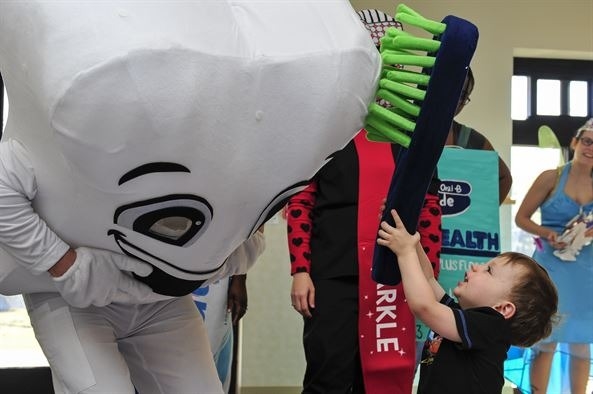
Basic Dental Hygiene Tips For Toddlers
19 Jul 2018 | 4 min Read
Dr Swapna Thakare Advanced Den
Author | 2 Articles
Cavities in your toddler’s budding teeth! Think about how painful they must be for those tiny tots. Childhood is all about sugar candies, toffees, and ice-creams. Keeping your tiny one away from the sweets is an arduous task. The well-known idiom “prevention is better than cure” is apt for kids’ dental care issues like tooth decay and cavities in our young ones. The following measures should be taken to ensure good oral hygiene for kids.
The first rule of dental health for kids: daily brushing and flossing is a must!
Baby dental care should begin at an early age. A child’s teeth should be brushed as soon as the first tooth erupts and your baby’s gums should be cleaned even before teeth start erupting. Ensure that you clean your baby’s teeth after every meal. Use a wet gauze or cloth to wipe gums and the newly erupting teeth.
Teach your child to floss
Flossing can be difficult for your little one. Hence teach your child after he or she is 5 years old. Until then, let your child observe you while you floss their teeth. Flossing helps avoid staining of the teeth, decaying of the enamel, and prevents halitosis (bad breath). Make a “C” shape of the floss around the curvature of the tooth. Move it up and down to ensure removal of plaque. Use a different floss for every tooth so as to avoid re-deposition of the plaque.
Let it be quirky and fun!
You can make brushing fun for your kid by playing games and using a colorful toothpaste and brush. To help make brushing a voluntary activity, make sure that your child enjoys it.
Brush more than once a day
Habituate your child to brushing at least twice a day, especially before sleeping. Ensure your child does not eat after brushing at night. If you give your child a pacifier after brushing, ensure that the pacifier does not contain anything other than water.
Use toothpaste with fluoride:
Fluoride helps in strengthening the tooth enamel and prevents cavities and tooth decay problems in your child. Its use is safe and recommended by dentists.
General tips:
- Use a soft-bristled, age-appropriate toothbrush, which is quirky and attractive to the child.
- Begin brushing with water and eventually switch over to a toothpaste. If your child has severe tooth decay problems, consult a pediatric dentist for the use of a toothpaste with fluoride.
- In children less than 2 years of age, the quantity of toothpaste should be smaller than a pea. For children between 2-5 years of age, you may use a pea-sized amount of toothpaste.
- Hold the toothbrush at 45 degrees to the gums and stroke gently back and forth for upto 3 minutes. Ensure that you brush the inner and outer surfaces of the teeth, especially the front teeth. Brush the tongue separately to cleanse the bacteria. Teach the child to rinse the mouth with water and spit out the toothpaste. Let the child observe you and you can assist him/her in learning the technique.
Food products you should keep away from your children
Sugar, sodas, and juices are the main culprits responsible for tooth decay in children. Sugar is terrible for the teeth, may it be a child or an adult. Let the cakes, ice-creams, and pastries be occasional. Soda is extremely harmful and the biggest enemy of the teeth. A lot of children suffer from tooth decay and inappropriate teeth growth due to the high intake of soda and carbonated drinks. Keep your child away from all carbonated drinks. Sugary juices can be substituted with water or fresh fruit juices.
Also read: Dental Care In Children
A


Related Topics for you
Suggestions offered by doctors on BabyChakra are of advisory nature i.e., for educational and informational purposes only. Content posted on, created for, or compiled by BabyChakra is not intended or designed to replace your doctor's independent judgment about any symptom, condition, or the appropriateness or risks of a procedure or treatment for a given person.
